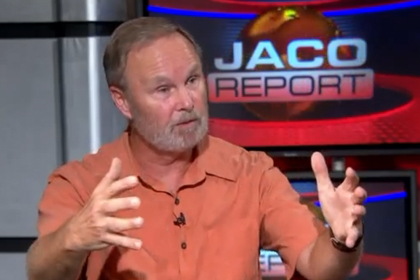With all the fanfare about Mars rover Curiosity landing safely on the Red Planet on Aug. 6, it’s easy to forget that there’s already a rover on Mars — an older, smaller cousin set to accomplish a feat unprecedented in the history of Solar System exploration.
Raymond E. Arvidson, PhD, the James S. McDonnell Distinguished University Professor in Earth and Planetary Sciences in Arts & Sciences at Washington University in St. Louis, is playing key roles in both Mars rover missions.
Since 2004, when NASA landed the Spirit and Opportunity rovers on opposite sides of Mars, Arvidson has served as a Mars Exploration Rover Mission deputy principal investigator for both of these rovers, often manning the controls that operate them on the surface of Mars.
Arvidson also was selected by NASA to be a participating scientist on the Mars Science Laboratory, a mission that landed a rover named Curiosity, on the Mars’ surface early in the morning of Aug. 6 in a complicated maneuver that NASA dubbed “seven minutes of terror.”
Curiosity, which lifted off from Earth on Nov. 26, 2011, is five times larger than Spirit or Opportunity and it carries much more sophisticated analytical equipment.
For the Curiosity mission, Arvidson plans to use the rover itself as a terramechanics instrument to learn about Martian soils. Terramechanics is the study of soil properties, especially those revealed by driving a vehicle over different terrains.
In addition to Arvidson, the Curiosity mission team includes seven Washington University graduates, all from Earth & Planetary Sciences, and one current Washington University student, Abigail “Abby” Fraemen, a National Science Foundation graduate fellow in Arts & Sciences. The graduates are: Bethany Ehlmann, AB ’04; Jen Griffes, AB ’03, MA ’06; Kim Lichtenberg, MA ’06, PhD ’10; Jeff Marlow, AB ’07; Mitchell Schulte, AB ’87, PhD ’97; Kirsten Siebach, AB ’11; and Rebecca (Eby) Williams, PhD ’00.
